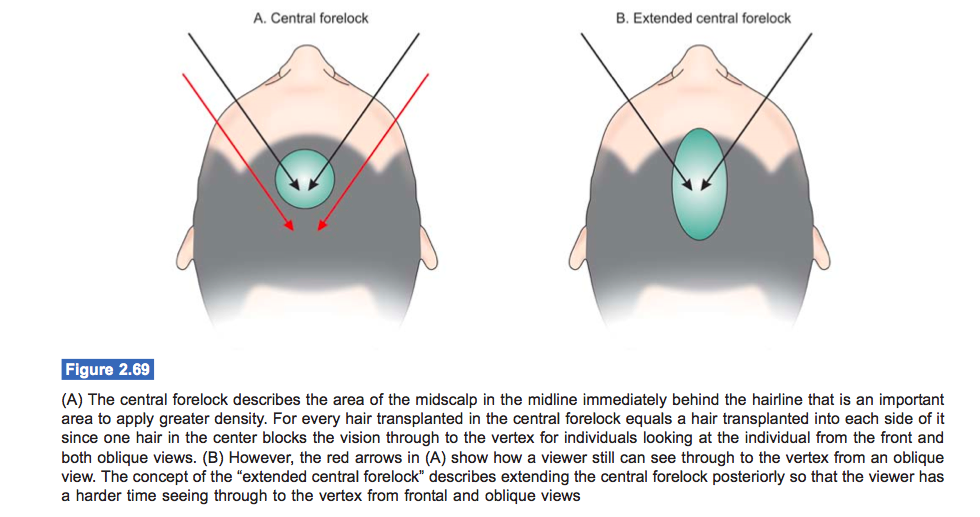Regions of the Head for Hair Transplant Part 1 of 4: The Central Forelock
In this article series, I will investigate some of the vital areas of the scalp that are transplanted and how I go about doing that. The terms that I describe here are ones that I use to communicate with my team and also how I strategize my approach to transplanting the scalp. The only area we will not cover is the hairline, which has been covered in another article and will be treated again in other articles in the future. This series will focus on the central forelock, the midscalp, the lateral humps, and the crown (or vertex). This article will focus on the central forelock.

Figure reprinted with permission from Hair Transplant 360, Volume 1 (Jaypee Brothers Medical Publishers, 2011), Samuel M. Lam MD
The area that is situated toward the midline of the head that falls immediately behind the hairline is known as the central forelock. It is the highest priority area to transplant hair and is prioritized both in terms of the grafts allocated there and it is the first area I create recipient sites for in order to ensure that I have the best grafts and a sufficient number to cover it.
Why is it so important? Many reasons. First, it is situated far anteriorly so that it conveys to an onlooker either baldness or non-baldness more than any other area. If the central forelock is weak, the entire hair transplant result can be weak. Second, because it is situated in the midline of the scalp, when onlookers look at the area from the left or the right side they see hair there. This stands in contradistinction to hair placed in the far right of the head, which can only be appreciated when someone is looking straight on or from the right side of your head. Accordingly, every graft transplanted into the central forelock almost plays double duty or has double the visual impact than any graft placed elsewhere.
The concept of the extended central forelock is also important. The area in the central to posterior midscalp that falls behind the central forelock is part of the extended central forelock. If you think about it, hair allocated to the standard central forelock blocks one’s views of baldness from all angles except farther back when someone is looking from either side of the head, you can still see baldness that is not visually blocked off in the posterior portion of the central head (as shown in the Figure). Although this area takes less precedence, it should be considered of secondary importance in many cases. Clearly if a person has a lot of hair loss in the fronto-temporal area, the hair would be better prioritized there to block off the baldness (even though it would take twice as many grafts to do it) since that area would be aesthetically more important.
The central forelock is typically created with larger 3 to 4 hair grafts with much higher density gradients than other parts of the head. The thickest 3 to 4 hair grafts are allocated in this area as opposed to weaker 2 to 3 hair grafts that would be distributed behind it. In addition, the density of grafts are placed much higher on the order of 50 grafts per square centimeter as compared with half of that density in areas of less importance like the posterior midscalp region, an area that we will discuss more in detail in the next article in this series.
Samuel M. Lam, MD, FACS is a board certified, hair restoration surgeon specializing in hair transplant procedures for men and women. To learn more about Dr Lam’s hair restoration procedures please visit our website hairtx.com or call 972-312-8105 to schedule a consultation.




